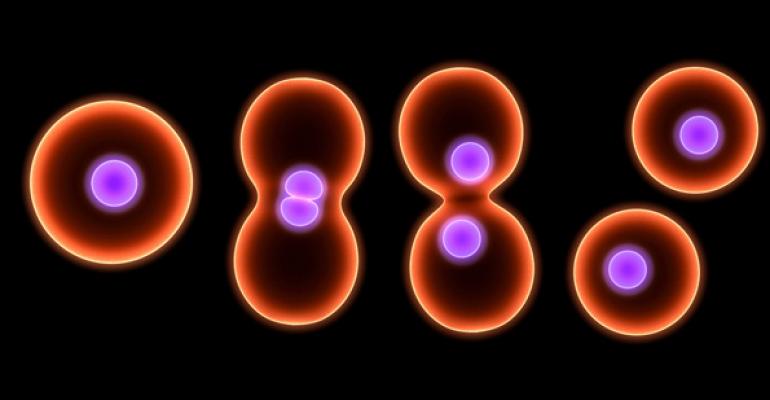On July 27, 2012, the Internal Revenue Service issued eight favorable rulings for a newly formed private foundation (PF) that proposed a transfer of all of its net assets to two separate PFs (Private Letter Ruling 201230026). The original PF, which expected to receive assets from a marital trust and annual payments from two charitable lead unitrusts, was governed by three directors, all of whom were siblings. Two siblings and their spouses shared the same charitable philosophies and goals; the third sibling, his spouse and his child shared a different charitable philosophy and goal. All three directors believed that the PF’s charitable endeavors would be more efficiently managed through two separate PFs. As such, the PF proposed to transfer two thirds of its assets to one PF and the remaining third of the assets to a second PF. The goal was for the two sibling groups to direct the investment and exempt uses of the assets independent of each other.
The PF requested that the IRS examine eight issues with respect to its proposed asset transfer. In an extensive analysis of the applicable sections of the Internal Revenue Code and the Treasury Regulations, the IRS addressed the following:
1. Do the proposed transfers constitute a significant disposition of assets to one or more PFs under Treas. Regs. Sections 1.507-3(a)(1) and (c)?
2. Will the proposed transfers result in a termination of PF status under IRC Section 507(a), or will it constitute a transfer between PFs under IRC Section 507(b)(2)?
3. Will the proposed transfers constitute either: 1) a notification of intent to voluntarily terminate PF status under IRC Section 507(a)(1), or 2) an involuntary termination of PF status by willful repeated acts (or failures to act) or a willful flagrant act (or failure to act) under Section 507(a)(2), such that the PF will be subject to tax under IRC Section 507(c)?
4. Will the proposed transfers give rise to investment income under IRC Section 4940?
5. Do the proposed transfers constitute self dealing and, therefore, subject the PF to excise tax under IRC Section 4941?
6. Does the PF have an obligation to satisfy the minimum distribution requirements under IRC Section 4942 for the taxable year of the transfers?
7. Do the proposed transfers constitute jeopardizing investments under IRC Section 4944?
8. Do the proposed transfers constitute taxable expenditures under IRC Section 4945(d), and is the PF required to exercise expenditure responsibility under Section 4945(h)?
Significant Transfers/Termination of PF Status
In its analysis, the IRS combined issues 1, 2 and 3, ruling that the proposed transfers would qualify as a significant disposition of assets to one or more PFs. Treas. Regs. Section 1.507-3(c)(2) defines “significant disposition of assets to one or more PFs” as any disposition in which the aggregate value transferred is 25 percent or more of the fair market value of the net assets of a foundation at the beginning of a taxable year. Because the PF proposed to transfer all of the assets to the two PFs, without any consideration and not from its current income, the transfers qualified as a significant disposition of assets to one or more PFs.
Furthermore, under IRC Section 507(a), a PF is terminated only if the PF either notifies the Secretary of its intent to terminate, or if there are willful repeated acts (or failures to act) or a willful flagrant act (or failure to act) giving rise to tax liability. Given that the PF: 1) didn’t notify the Secretary of its intent to terminate, and 2) didn’t commit willful repeated acts (or failures to act) or a flagrant act (or failure to act), there was no voluntary or involuntary termination of PF status. The proposed transfers, however, would constitute transfers between PFs under Section 507(b)(2).
No Investment Income/No Self Dealing
The proposed transfers to the two PFs lack consideration and won’t be made out of current income. Thus, the transfers don’t constitute investments, sales or other dispositions of investment property, which would produce investment income taxable under IRC Section 4940. Accordingly, the transfers don’t give rise to investment income subject to the 2 percent excise tax under Section 4940.
Regarding whether the PF should be taxed on the transfers as acts of self dealing, the IRS noted that self dealing occurs between a disqualified person and a PF. “Disqualified person” doesn’t include exempt organizations such as PFs. As such, transfers of assets from the PF to the two PFs don’t constitute acts of self dealing and, thus, aren’t subject to excise tax.
Minimum Distribution Requirements
The IRS ruled that the PF has no obligation to satisfy the minimum distribution requirements under IRC Section 4942 for the taxable year of the transfers. Because the PF proposed to transfer all of its assets to the new PFs—which are controlled by the same individuals who control the original PF—the new PFs will be treated as though they were the original PF for the taxable year of the transfers.
Jeopardizing Investments/Taxable Expenditures
The proposed transfers: 1) lack consideration, 2) won’t be made from current income, and 3) don’t constitute sales or other dispositions of investment property. The IRS, therefore, determined that the proposed transfers don’t constitute investments that jeopardize the PF’s exempt purpose and aren’t subject to tax under IRC Section 4944.
Finally, there’s no excise tax on expenditures, because the same individuals who control the original PF will make the proposed transfers of assets to the two PFs. As such, the PF has no expenditure responsibility with regard to the proposed transfers.





